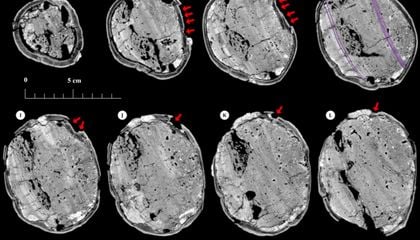Astronomers worldwide are currently captivated by the trajectory of a celestial object that appears to have journeyed from beyond our solar system, potentially marking only the third confirmed interstellar visitor ever detected. This groundbreaking discovery, initially announced by the European Space Agency (ESA), offers an unparalleled opportunity for scientists to scrutinize material originating from another star system without the prohibitive costs and complexities of deep-space missions. Its presence reignites the scientific community’s fascination with the vast, unexplored reaches of our galaxy and the possibilities of encountering cosmic wanderers.
The identification of this object as potentially interstellar is a significant milestone in modern astronomy. Unlike comets or asteroids that orbit our Sun, an interstellar object follows a hyperbolic trajectory, indicating its non-gravitational bound to our stellar neighborhood. Previous detections, such as ‘Oumuamua and 2I/Borisov, have provided tantalizing glimpses into the diversity of cosmic bodies beyond our immediate cosmic environment. This latest find adds crucial data to a nascent field of study, promising to expand our understanding of planetary formation processes and the composition of stellar systems far removed from our own.
Scientists across the globe are deploying an array of sophisticated observational techniques to gather as much data as possible on this intriguing visitor. From tracking its precise trajectory and velocity to analyzing its light spectrum for clues about its composition, every piece of information is invaluable. While the object is deemed entirely harmless, its rapid transit through our solar system necessitates swift and coordinated efforts to maximize the scientific return, utilizing ground-based telescopes and potentially space-based assets to unravel its mysteries.
The study of such interstellar objects holds profound implications for fundamental theories in astrophysics. By examining material from another star system, researchers can empirically test hypotheses about the chemical makeup of exoplanets and the conditions under which planetary systems form across the cosmos. This direct interaction with matter from distant stellar neighborhoods provides tangible evidence that was previously only accessible through theoretical models or indirect observations of exoplanetary atmospheres.
Furthermore, the frequency with which these interstellar visitors traverse our solar system can offer insights into galactic dynamics and the distribution of matter throughout the Milky Way. Each new discovery contributes to a broader understanding of the universe’s architecture, suggesting a dynamic cosmic environment where objects regularly migrate between star systems. This phenomenon could reshape our cosmic perspective, highlighting the interconnectedness of stellar neighborhoods and the fluidity of celestial bodies in the grand expanse of space.
As astronomers continue to meticulously monitor and analyze this extraordinary object, the anticipation within the scientific community is palpable. The data collected from this unique interstellar object promises to unlock secrets of galactic travel and the genesis of celestial bodies beyond our local cosmic neighborhood. This ongoing observation will undoubtedly contribute significantly to our understanding of the broader universe, fueling further inquiry into the origins of matter and the prevalence of such fascinating wanderers through the cosmic ocean.
Discover more from The Time News
Subscribe to get the latest posts sent to your email.






